I’ve been checking out local nurseries the past couple weeks, both independents and chains/franchises, which isn’t news since I do this quite a lot, but bringing a serious intent to change some of the garden late in May is news. I know a lot of gardens are just beginning to send out their personal shoppers (us) in May, but a zone 10 summer garden should ideally be settled by now, planned and planted last fall, which always gives superior results compared to a spring planting, much less a late spring planting. There should be no more fiddling with it after May, because summer will knock most new plantings on their ass. But the Diascia personata really had to go. I think it’s a good plant with great potential, maybe a bit more afternoon shade. (Grace, I think you’d love it if the leaves stay clean for you.) And maybe it’s suited for larger gardens, not because of it’s size but because it’s best seen massed, and from a distance. That pinky-coral color never stopped grating on me, which is odd because I don’t mind it on the smaller diascias. On the whole, I prefer Diascia integerrima.
As a replacement, I was leaning towards something blue/violet, in agastaches maybe, but none were to be found local, and small-sized mail order plants would be of no use this late in the season. I settled on Salvia greggii ‘Salmon Dance,’ a) because, well, there it was in 4-inch pots; b) they’re tough as old boots; c) they’re not pink; and d) as a sloppy-seconds planting, at the very least the hummingbirds will be happy. Although it’s not a conscious plan, pink continues to be purged from the garden and the reign of orange goes on.

This morning I split off some pieces from a large clump of Pennisetum ‘Sky Rocket,’ which is just getting its burgundy plumes, to fill the gap along with the salvia. This pennisetum, planted last year, thickens fast but the blades seem to top out at a relatively modest height of 2 and half feet or so. If it holds to this height, it will prove to be a valuable grass indeed. Grown as an annual in zones below 8.
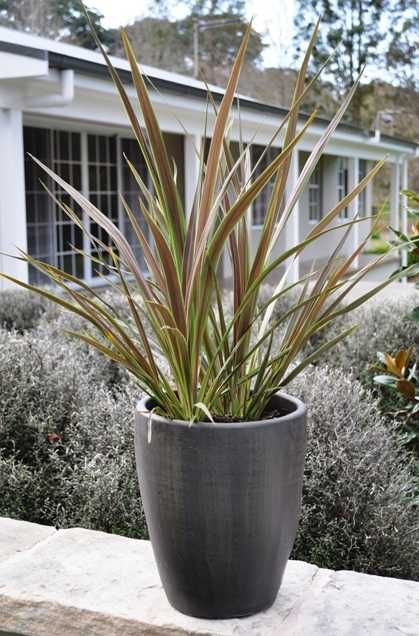
Image from San Marcos Growers
And though I didn’t find exactly what I needed, as is typical of plant nursery jaunts, I found lots that I wanted. There was a cordyline I haven’t seen before, Cordyline ‘Electric Star,’ the clumping kind with subtle, phormium-like coloration. I’d have been all over this cordyline in a smaller, cheaper size.
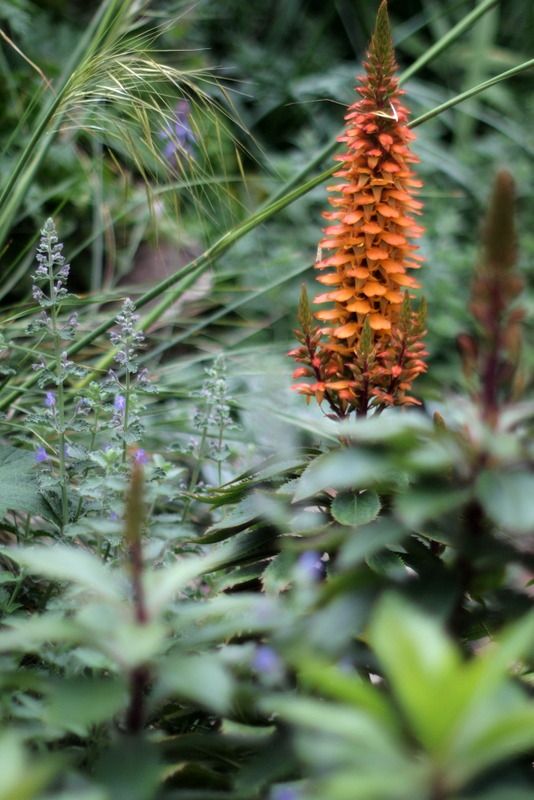
Another surprise was Isoplexis canariensis for sale locally, exquisitely in bloom in gallon containers at H&H Nursery, under their label. Always exciting to see a plant make the leap and graduate from rare and desirable to readily available and dependable. It’s still a little early to know just how dependable or long-lived. The photo is from my garden in April, but it’s still in bloom and sending out fresh spikes. I wouldn’t be surprised if this becomes as ubiquitous as that other strong orange, leonotis. Keeping with my orange/warm color fetish, there were a couple kniphofias at H&H I haven’t seen available local before, ‘Alcazar’ and ‘Nancy’s Red.’ Selections like these have previously been found only in Digging Dog’s catalogue.
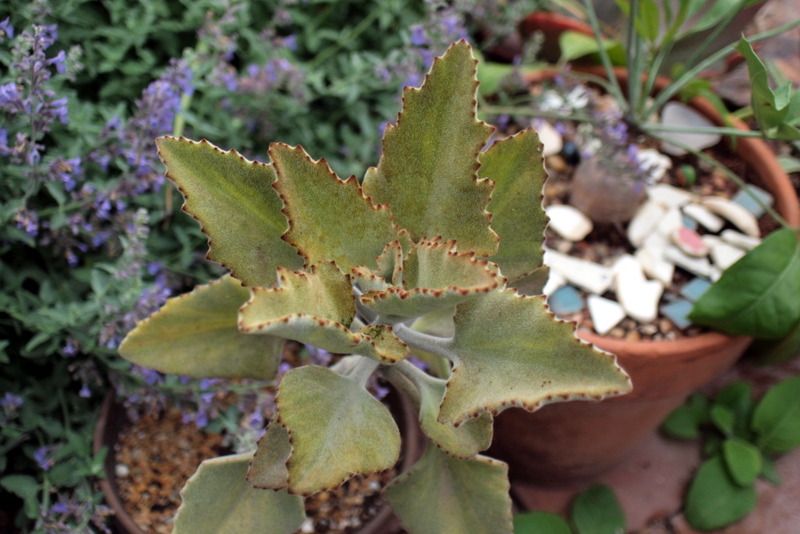
Also at H&H was an unusual, smooth-skinned Kalanchoe beharensis appropriately named ‘Furless.’ I still can’t decide if smooth leaves are necessarily desirable in a Kalanchoe beharensis. Checking around, I find Glasshouse Works lists something similar called ‘Baby’s Bottom.’ I had no idea there was such variety with this kalanchoe, with some leaves deeply lobed. Mine pictured above was brought home from a plant sale last year, supposedly variegated. It hasn’t shown very strong variegation so far, but the edges do seem a bit more incised and ruffled than the species as I remember growing it.
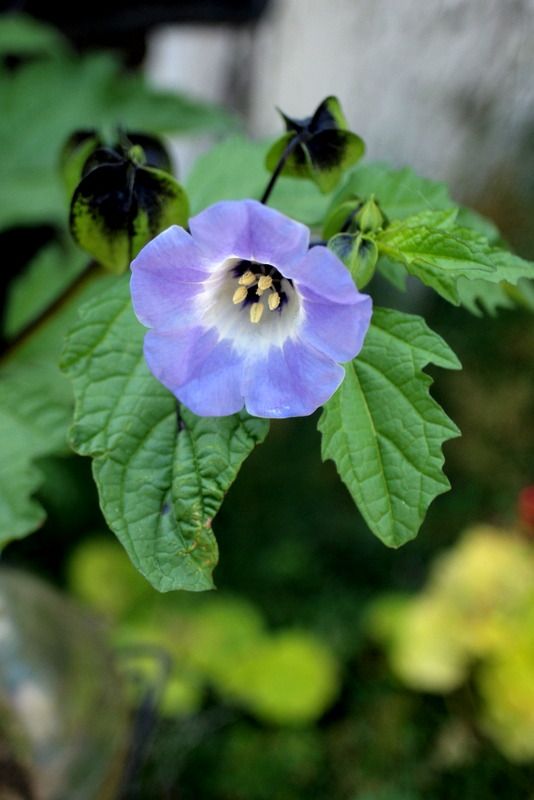
I ran into this beauty, one of the annual Chilean bellflowers, nolana, at Brita’s nursery in Seal Beach, where it was growing in the ground, possibly from self-sowing.
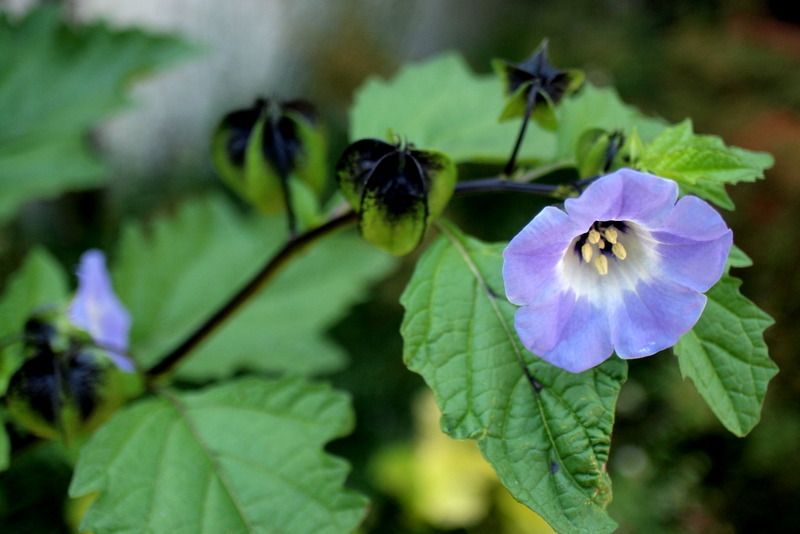
A big, sprawling thing, with black stems and black splotches on the flower capsules. The nolana commonly available from seed is Nolana paradoxa, but an image search didn’t produce photos showing those sexy black markings.

And I was thrilled to score a couple Digitalis trojana in bloom and hopefully ready to throw some seed around. This is one I don’t mind planting in late spring, because if it’s anything like that other tawny foxglove from Turkey, Digitalis ferruginea, it will hate hanging on sleepless through a mild winter. If it self-sows, it just might find the perfect spot, the one I never seem to find for it.

I understand your trepidation about planting after May, especially given the early bouts of heat and low humidity we’ve already experienced, but I’m finding myself with itchy urges to replant too. In fact, I placed an order for 9 plants “heat and drought tolerant” plants with Annie’s this weekend. I’m well aware that I’m pushing my luck as they’ll have little time to establish healthy root systems before summer hits hard but I couldn’t help myself – our removal of a large tree in late January turned a formerly shady spot into a very sunny one so everything looks like crap. Good luck with your own revisions. I’m crossing my fingers that the prognosticators are wrong and we’ll have a cooler summer than expected…
I think you just solved a mystery for me! I bought what I thought was (and was labeled as) a Phormium, but something just wasn’t right. I think it’s a Cordyline banksii Electric Star! First thing tomorrow morning I’m doing a little investigation…
@Kris, I’ll bet your plants will do fine. There’s really no hard and fast rules if you’re careful. But I’m going to be away off and on this summer and won’t be around to baby things. We did that shade-to-sun tree removal bit last fall. Good luck with that! It’s nice having room for more sun-lovers, but it is quite an adjustment and things do look like crap for a while…but plants are amazingly resilient…especially if the weather cooperates.
@Loree, it’s a really beautiful plant. These were $40, but I was so tempted.
the chilean bellfower is nicandra physaloides or shoofly plant.
Thanks for helping solve the mystery I have in my flower bed. you had the only image in google and from there
I kept looking for those distinctive markings in images and bingo
shoofly